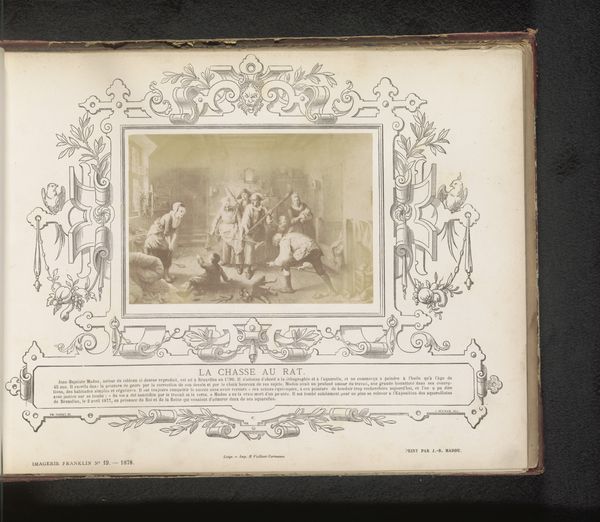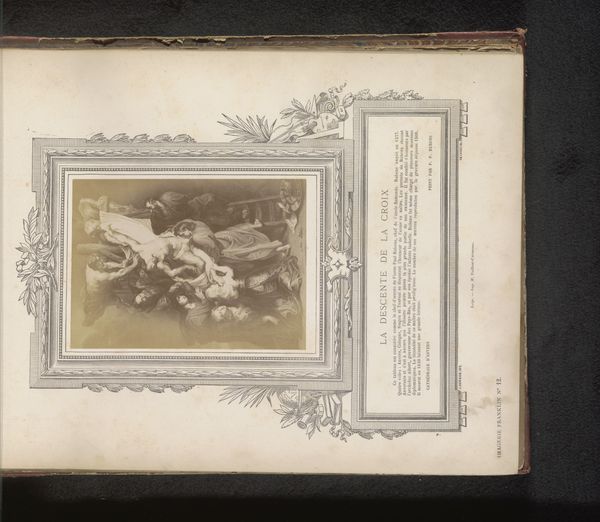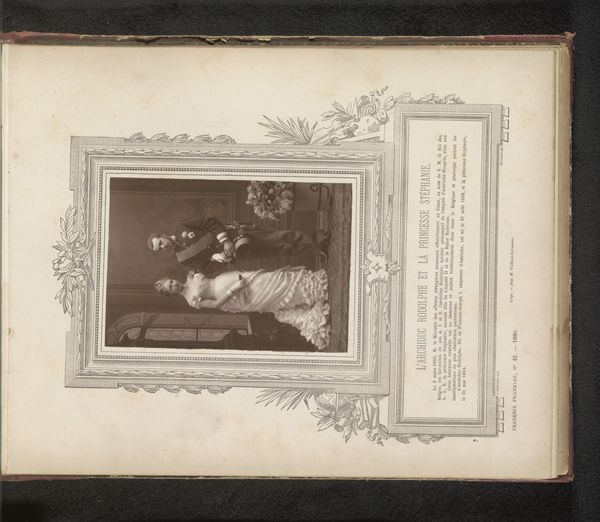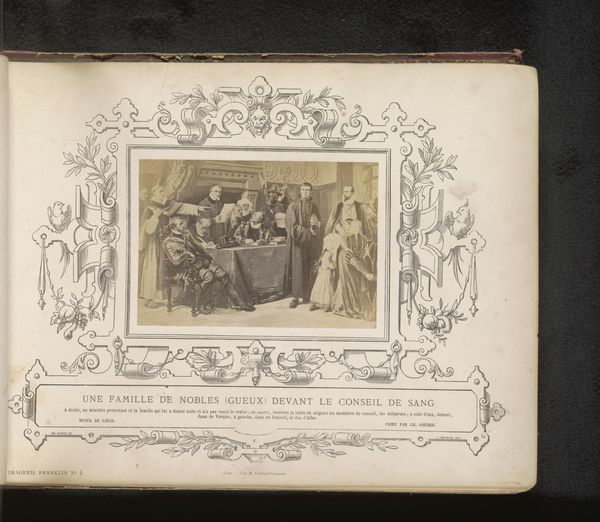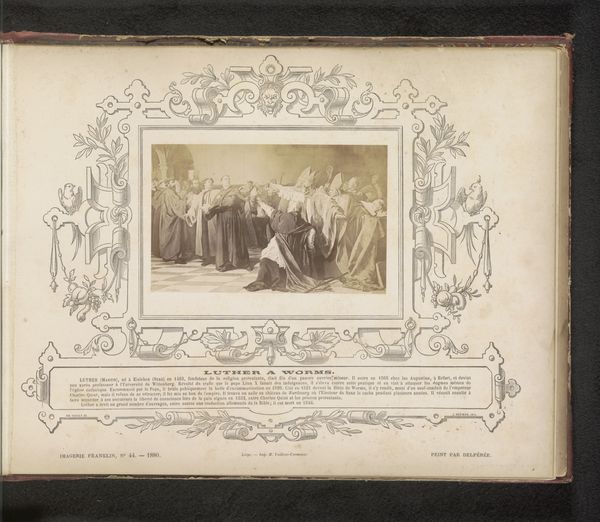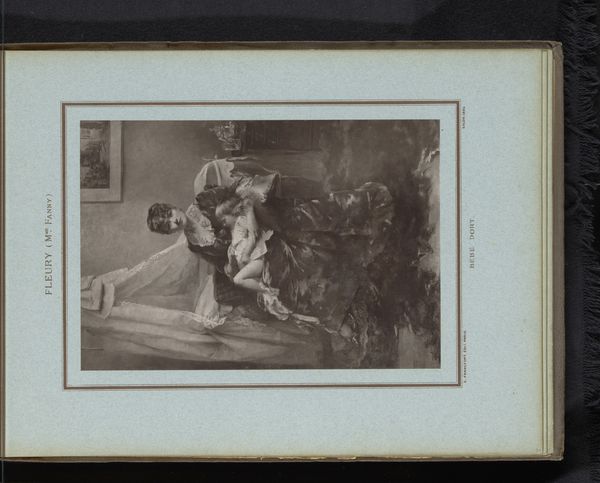
Reproductie van een schilderij van het lichaam van Christus in de schoot van Maria door Anthony van Dyck before 1879
0:00
0:00
anonymous
Rijksmuseum
Dimensions: height 80 mm, width 142 mm
Copyright: Rijks Museum: Open Domain
Curator: Let's turn our attention to this print displayed before us. It’s labeled "Reproductie van een schilderij van het lichaam van Christus in de schoot van Maria door Anthony van Dyck," essentially, a reproduction of a painting of Christ's body in the lap of Mary by Anthony van Dyck. Dating from before 1879, the piece employs printmaking techniques—engraving and etching specifically. Editor: It has a dramatic quality typical of the Baroque, all swirling drapery and theatrical light. It feels like a staged performance. It has a real feeling of grief; do you notice the almost operatic anguish? Curator: Absolutely. This particular theme, the Lamentation, is steeped in religious and artistic symbolism. Consider Mary's lap as the altar on which Christ's sacrifice is laid. Van Dyck clearly aims to capture divine suffering but note the emphasis on the earthly: Christ’s very pale, exposed flesh is extremely prominent in the composition. It creates an immediate, almost visceral, reaction. Editor: And think about how the printmaking process influences that reception. It’s a reproduction, yes, mediating the ‘original’ experience of Van Dyck’s painting. These kinds of prints were very popular, disseminating artworks more widely and cheaply. We have to consider the labour involved in etching and engraving to multiply an image of the sacred. And, ultimately, what that reproduction is made for. Curator: That mass distribution surely shifted the emotional dynamic. Once reserved for a wealthy patron or a select church audience, now this highly charged religious imagery enters homes, perhaps shaping devotional practices... Editor: Indeed. The act of mechanical reproduction itself becomes part of the artwork's aura, no? These weren't meant to be artworks to sit pristine behind glass, untouched by hands, it's about an exchange. The image serves as a contact point, and as a prompt. Curator: It creates a fascinating tension. It’s easy to get lost in its surface aesthetic and emotive content, but looking closer and questioning how it was constructed gives one insight into the artistic ingenuity that also fuels broader devotional movements. Editor: Precisely. Viewing it through this lens adds new depth to both the image and the era itself, illustrating its religious views in a physical form, beyond its aesthetic beauty.
Comments
No comments
Be the first to comment and join the conversation on the ultimate creative platform.
